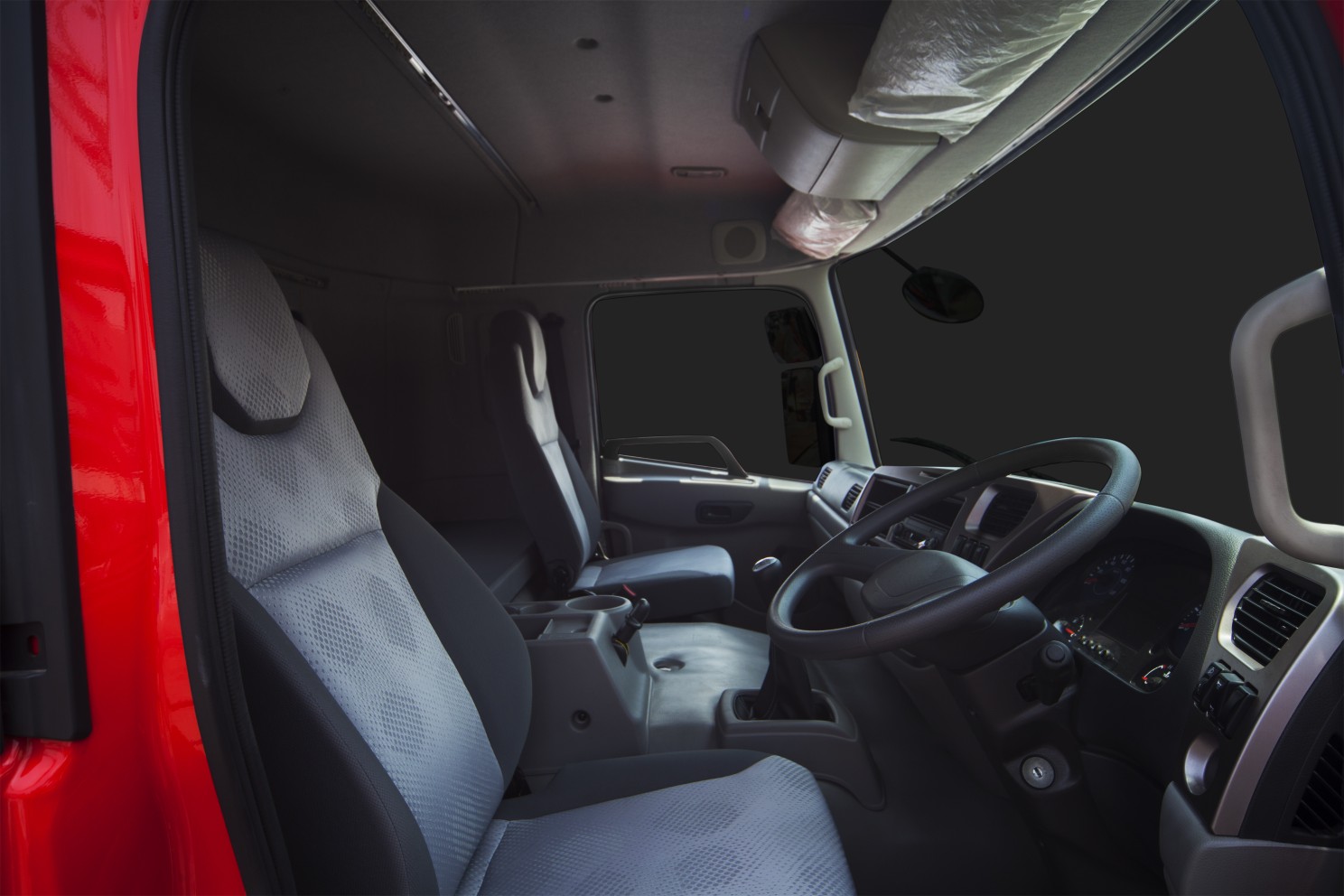
Susie Jones
Fem gode råd til at gøre dit lastbilførerhus til et hjem
Oprettet: 22.08.2024
•
Opdateret: 22.08.2024
Som lastbilchauffør tilbringer du mange timer på vejen, hvilket ofte kan være trættende og monotont, så du vil naturligvis gerne have, at dit miljø, det område, hvor du er udstationeret i længst tid, føles som et andet hjem. Derfor har mange chauffører en tendens til at tilpasse og indrette deres førerhuse, men hvad er de bedste måder at få din sovekabine til at føles som et hjem væk fra hjemmet? Vi har samlet fem gode råd, der kan hjælpe dig på vej.
Dekoration
En af de bedste måder at gøre dit førerhus personligt på er at tilføje dekorationer, der minder dig om dit hjem. Dekorationer giver dig også mulighed for at tilføje stil og farve.
Sengetøj og puder - Sæt et personligt præg på dit sengetøj og dine puder ved at vælge nogle, der har en farve eller et mønster, du kan lide. Det kan få din hytte til at føles lidt mere hyggelig og mindre stillestående.
Sædebetræk - Sædebetræk fås ofte i forskellige farver, mønstre og materialer, som giver lidt liv til din kabine. Ikke alene får de førerhuset til at føles mere indbydende, men de beskytter også interiøret mod slitage, snavs og spild. Amazon har ofte et stort udvalg af farver til rådighed.
Tæpper, gardiner og solafskærmning - At vælge nogle tæpper og gardiner kan forvandle interiøret i din kabine. Gardinerne vil ikke kun tilføre en æstetisk værdi, men de vil også hjælpe dig med at få en god nats søvn.
Fotos, plakater og kunstværker - Disse ting fylder ikke meget i førerhuset og kan få det til at føles som et hjem med det samme. Brug kommandokroge til skadefri installation.
Underholdning: Når du er færdig med din køredag, kan du slappe af som derhjemme ved at se tv, dvd eller streame noget på din bærbare computer. Du skal bruge WiFi, før du kan streame, så tjek vores [kortside] (https://snapacc.com/map/) for at finde ud af, hvilke stoppesteder der tilbyder denne service.
Alternativt kan du oprette et smartphone-hotspot, der bruger din telefons data til streaming. Bøger og magasiner er en anden god måde at blive underholdt på efter en lang dag med kørsel. Nogle gange kan et enkelt videoopkald til venner eller familie få dig til at slappe af og føle dig hjemme.

Komfort
Du tilbringer meget tid i førerhuset, så det er vigtigt ikke at gå på kompromis med din komfort. Hvorfor ikke investere i følgende:
Topmadras - At få en god nats søvn er afgørende for din og andres sikkerhed. Ved at investere i en god topmadras sikrer du, at du har et behageligt sted at sove.
Ergonomisk førersæde - Størstedelen af din tid tilbringes i førersædet, så det er vigtigt at sikre, at det er så behageligt og støttende som muligt. Invester i et ergonomisk førersæde eller en pude, der støtter din ryg i de lange timer.
Ekstra puder og tæpper - Som nævnt ovenfor kan det at købe sengetøj og puder i en farve eller et mønster, du kan lide, få din kabine til at føles mere som et hjem. Overvej at købe ekstra puder og tæpper for at give førerhuset et endnu mere personligt præg og maksimal komfort.
Køkkenområde/apparater
Med et minikøleskab eller en mikrobølgeovn i førerhuset kan du tilberede mad, som du ville gøre derhjemme, så du ikke er afhængig af at spise ude. Vi foreslår, at du tænker over, hvilke ting du har brug for på dette område - hvis du f.eks. er kaffedrikker, kan du prøve at skaffe en lille kaffemaskine. Hvis du bruger dit køkken og dine apparater, slipper du ikke kun for at bruge en formue på at spise ude, men det vil også have en positiv effekt på dit generelle helbred.
Hold tingene rene og ryddelige
Det kan hurtigt blive ret rodet at bo på en lille plads. At investere tid og kræfter i at få en regelmæssig rengøringsrutine kan gøre underværker for dit mentale helbred og gøre dig i stand til at arbejde mere effektivt. Det hjælper at have dedikerede områder til dine ting, og [ProDrivers] (https://www.prodrivers.com/news/2020/10/40189977/6-ways-to-keep-your-cab-and-sleeper-berth-organized) har nogle gode tips til at holde styr på det hele.
Hvordan håndterer lastbilchauffører kedsomhed?
Kedsomhed påvirker ikke kun arbejdsglæden, men kan også påvirke arbejdssikkerheden. Der er mange måder, hvorpå lastbilchauffører kan holde sig underholdt, mens de er ude at køre.
Musik og podcasts: Musik er en god måde at underholde bilister på under lange køreture. Hvis man opretter en playliste med yndlingssange, som man kan lytte til, kan det øjeblikkeligt mindske kedsomheden. Podcasts er en god måde at variere tingene på, og mange af dem kan give gode råd, hjælpe med at lære en ny færdighed eller bare underholde.
Stræk dine ben: At stoppe og stige ud af førerhuset for at strække benene kan øjeblikkeligt fjerne kedsomhed. Regelmæssige stop kan også booste din energi.
Hvor sover lastbilchauffører?
Siden 1. november har lastbilchauffører i Storbritannien, som holder regelmæssige ugentlige pauser i førerhuset, skullet holde dem på ordentlige rastepladser. Da der ikke er så mange af dem, har nogle chauffører taget deres hvil på rastepladser, som ofte er usikre. Derfor er det vigtigt at finde et sikkert og roligt sted at parkere for at få en god nats søvn eller hvile. Ved at bruge vores intruck-app eller gå ind på vores [kortside] (https://snapacc.com/map/) kan du finde en truckpark i nærheden af dig og se, hvilke faciliteter der tilbydes.
Hvordan håndterer lastbilchauffører ensomhed?
Der er mange fordele ved at være lastbilchauffør, men en af ulemperne ved branchen kan være ensomhed. Det kan være et problem for mange chauffører, som føler sig isolerede på grund af deres job. Hvis man planlægger at holde kontakten med venner og familie, kan det give chaufførerne et boost, når de er ude at køre. Trucking-fora, Facebook-grupper og chatrum er gode, hvis du ønsker at blive en del af trucking-fællesskabet. [All Trucking] (https://www.alltrucking.com/faq/how-beat-being-lonely-truck-driver-road) har nogle fantastiske tips til at hjælpe dig med at bekæmpe ensomhed som lastbilchauffør på vejen.
Det kræver lidt indsats og kreativitet at få dit lastbilførerhus til at føles som et hjem, men fordelene ved at gøre det vil gøre dine lange rejser meget lettere. Det er vigtigt at huske, at små detaljer kan gøre en stor forskel for dit opholdsrum, og ved at bruge ovenstående tips kan du gøre det behageligt og indbydende. Hvordan får du din kabine til at føles som et hjem væk fra hjemmet?



